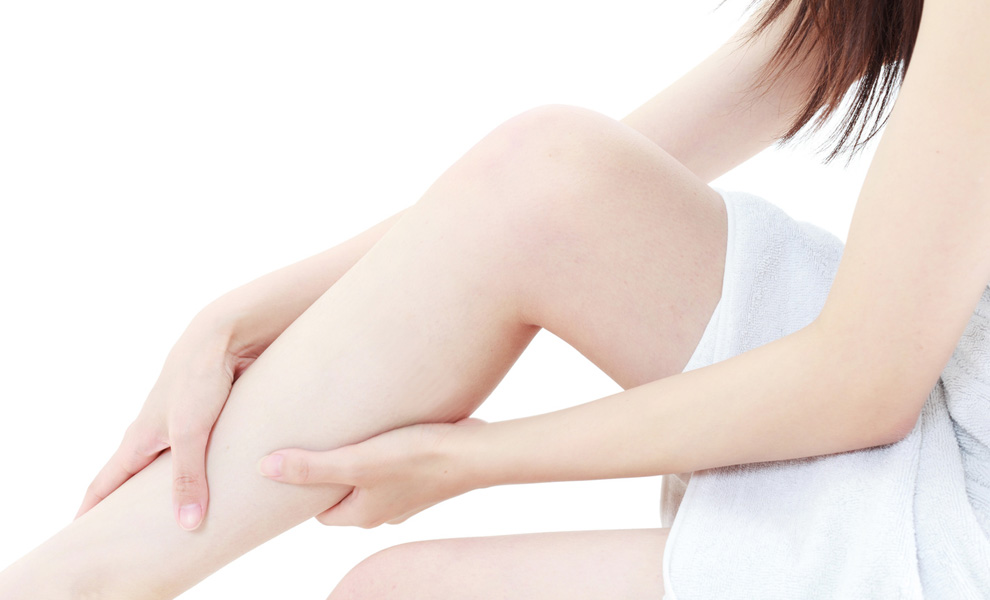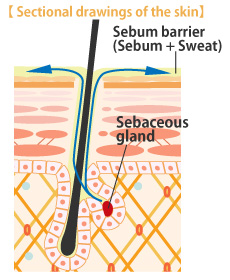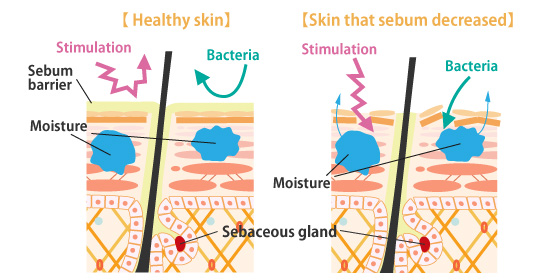
The general image of “Sebum” might have a negative impression as it is also involved in to ‘acne’. However the skin is protected by the sebum barrier. Acne occurs when too much sebum is produced. However, there would be problems with dry skin and possibly conditions such as rhagades if too little sebum is produced. Sebum is comprised of a range of aliphatic compounds and has the role of maintaining the moisture level of the skin.
 Sebum is one of the lipid components that sebocytes produce with the main components being triglycerides. Sebum is released from the sebaceous glands, transported to the surface of the skin through the pores and providing a sebum barrier by mixture with sweat.
Sebum is one of the lipid components that sebocytes produce with the main components being triglycerides. Sebum is released from the sebaceous glands, transported to the surface of the skin through the pores and providing a sebum barrier by mixture with sweat.
The sebum barrier maintains moisture and provides smoothness of the skin and hair. Moreover, the lipids contained in sebum are decomposed by resident bacteria on the skin producing fatty acids. These fatty acids increase the protective capability of the skin by producing a mild acidity that is an unsuitable environment for pathogenic bacteria to propagate.
The function of sebum in the skin
The secretion of sebum decreases due to various factors such as stress, aging, dry air, soap and detergent. As a result, an adequate sebum barrier is not produced making exogenous irritation or infection easier. If the skin is injured, water evaporation from the skin is promoted, leading to skin metabolism disorders and problems such as dry and wrinkled skin. A decrease in sebum secretion also causes skin disorders, such as pruritus and pain.

Maintaining a healthy balance in the production of sebum by the sebaceous glands is crucial for the health of the epidermis. Supplying sebum from outside can also help. However, maintaining the ability for natural sebum production is more ideal as sebum is produced within the body. Heimat discovered that maitake extract lipid has a valuable promotional function for sebum production.